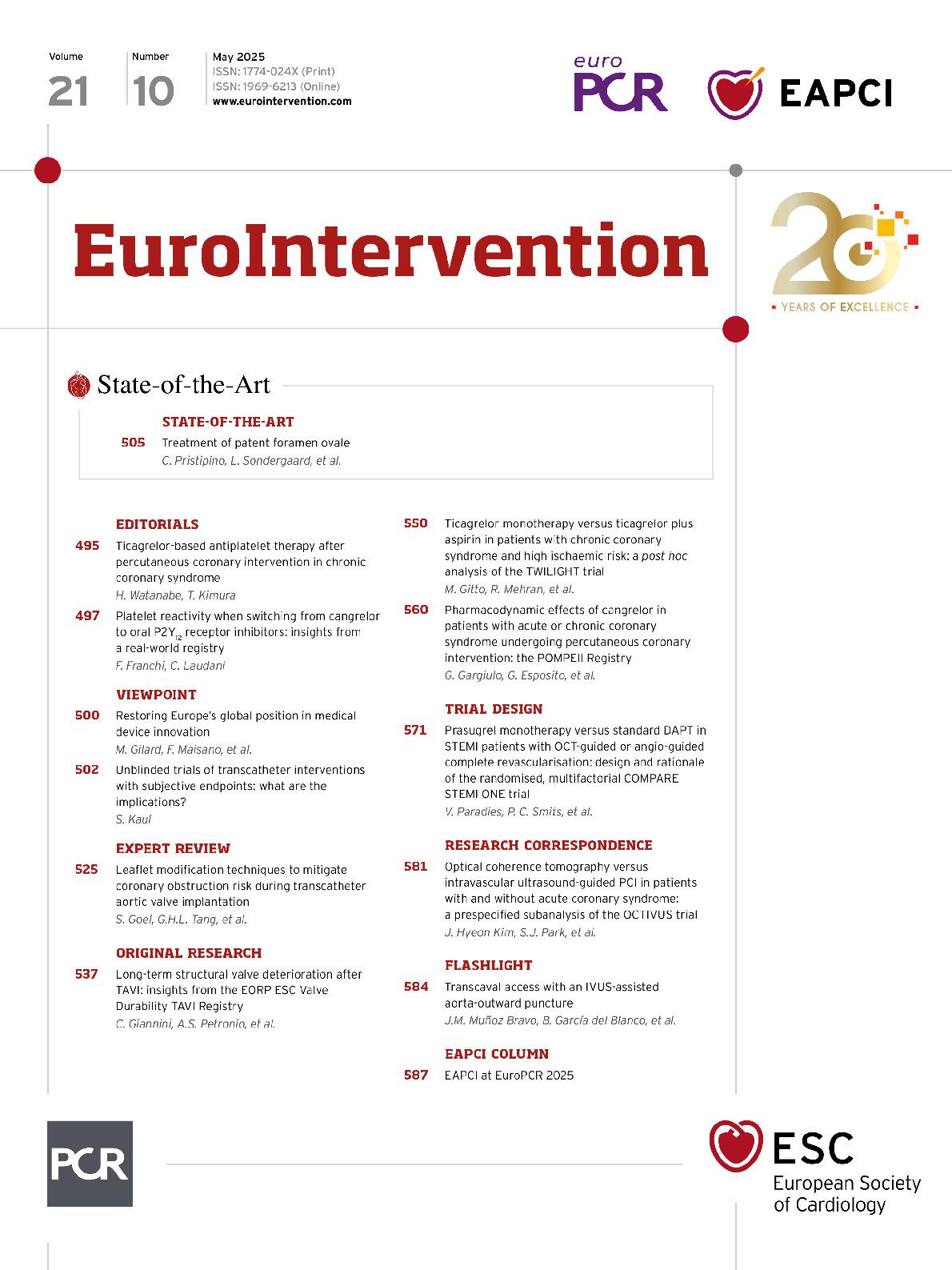Recently, two breakthrough transcatheter devices were approved by the U.S. Food and Drug Administration (FDA) for improving health status in patients with symptomatic severe tricuspid regurgitation (TR) despite optimal medical therapy (OMT). The approval of these devices has sparked a debate about whether unblinded trials with bias-/placebo effect-prone outcomes − such as symptom status, functional capacity and quality of life (QoL) − provide valid scientific evidence to establish “reasonable assurance” of a device’s safety and effectiveness for approval.
The two devices – EVOQUE (Edwards Lifesciences) for transcatheter tricuspid valve replacement (TTVR)1 and the TriClip G4 (Abbott) system for tricuspid transcatheter edge-to-edge repair (T-TEER)2 – were approved based on supportive data from two pivotal trials, TRISCEND II1 and TRILUMINATE3, respectively. Both were prospective, open-label, multicentre, randomised controlled trials comparing the TTVR or T-TEER device plus OMT versus OMT alone. Both trials met their primary safety and effectiveness endpoints. In TRISCEND II, the primary effectiveness endpoint was a hierarchical composite of improvements in: Kansas City Cardiomyopathy Questionnaire overall summary (KCCQ-OS) score >10, at least 1 New York Heart Association...
Sign up for free!
Join us for free and access thousands of articles from EuroIntervention, as well as presentations, videos, cases from PCRonline.com

